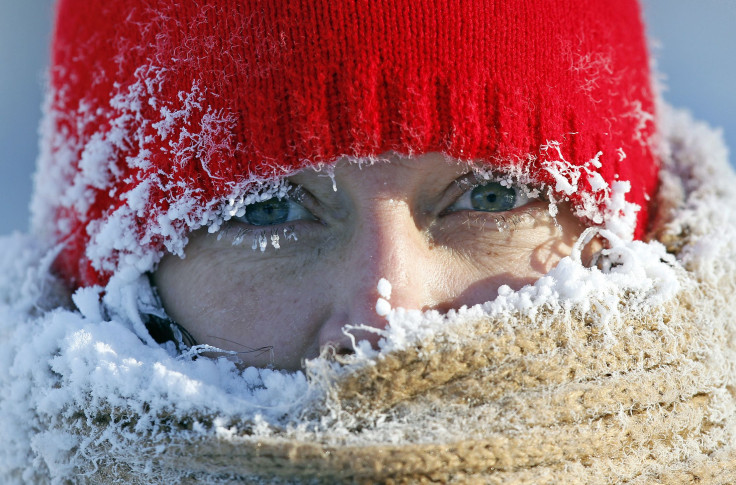How To Prevent Frostbite: 7 Tips For Dealing With Dangerous Winter Weather Conditions

North America will take a punch from an icy blast of Arctic air this week, which will bring bone-chilling temperatures to parts of the U.S. and Canada. Meteorologists warn of the dangers of frostbite, a condition brought on by extreme cold that can make being outdoors not only unbearable, but potentially dangerous.
“The key is to avoid exposure to extreme cold temperatures,” Dr. Ryan Fey of Hennepin County Medical Center in Minneapolis, Minnesota, told the Star Tribune. "That means staying indoors when it’s cold, and if you have to be outdoors for any length of time, making sure you dress appropriately to stay warm -- even if it’s just a run to the mailbox or from your house to your car.” Frostbite warnings were issued Monday for Ontario as Arctic air began sinking into Canada and the U.S.
Frostbite occurs when cold temperatures kill exposed skin tissue. The condition can cause permanent damage and most noticeably affects ears, nose, fingers, toes, cheeks and chin. Here are some tips for to preventing frostbite this winter.
Limit your time outdoors. In Arctic conditions, when wind chill readings can drop to a staggering minus 40 degrees Fahrenheit, it’s only a matter of minutes before frostbite can set in. Try to stay indoors as much as possible, avoid long walks outside, and heed any warnings about weather conditions in your area.
Dress appropriately. It’s not enough to layer. Clothing should fit loosely to allow pockets of air trapped between the layers to provide insulation from the surrounding cold, according to Mayo Clinic. Waterproof and windproof outerwear is best, and undergarments should be made from a material that wicks moisture away from the skin.
Hats and beenies should fully cover the ears. Mittens are better than gloves for keeping hands warm in freezing climates. Ski masks are also suggested.
Don’t drink alcohol or smoke cigarettes. Drinking and smoking make the human body more susceptible to cold.
Change out of wet clothing. Wet clothing can increase the risk of frostbite and should be removed.
Look for early signs of frostbite. Pain or redness in a particular area are among the first indicators of frostbite, according to the Centers for Disease Control and Prevention. Other signs of frostbite include white or grayish-yellow skin, numbness, or skin that feels waxy or firm.
If frostbite is suspected, get indoors and change into dry clothing. Drink hot tea, coffee or hot chocolate to help raise your body temperature. Soak the affected area in warm, not hot, water for 30 to 40 minutes.
Seek medical attention immediately if signs of frostbite occur. Minor frostbite -- also called “frostnip” -- may be treated at home, but blistering, loss of sensation or discoloring of skin should be seen by a doctor.
© Copyright IBTimes 2024. All rights reserved.












